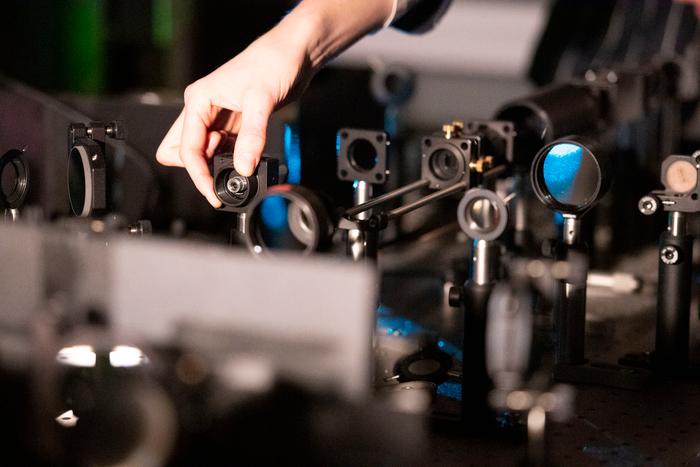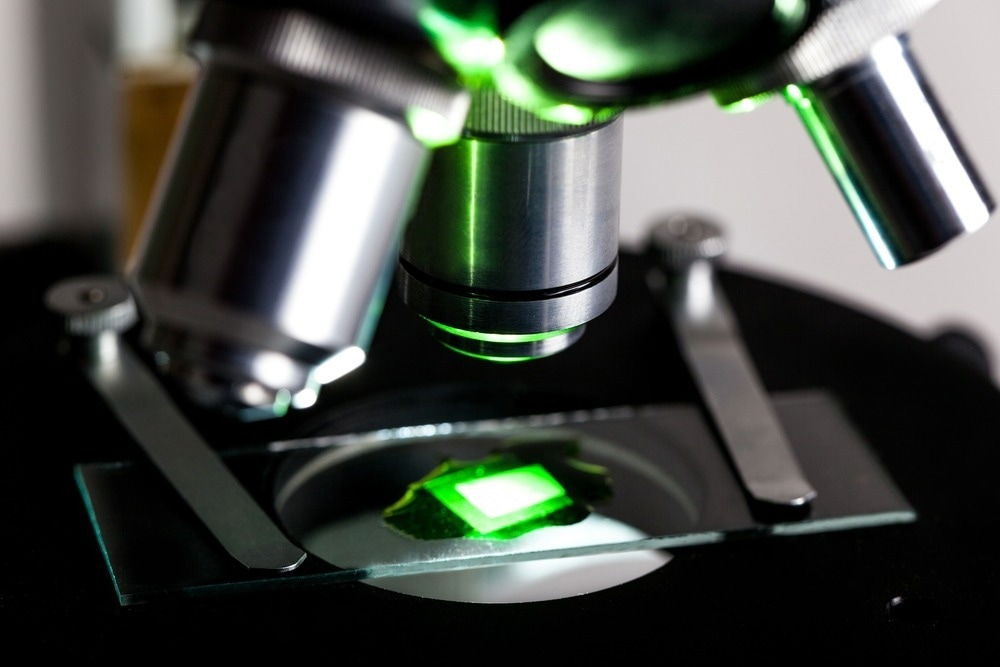Reviewed by Danielle Ellis, B.Sc.Sep 9 2022
Consider a Ph.D. candidate with a fluorescence microscope and a live bacterial sample. How might these resources be used in the most effective way to get specific observations of bacterial division from the sample?
 Suliana Manley’s fluorescent microscope at EPFL. Image Credit: Hillary Sanctuary / EPFL
Suliana Manley’s fluorescent microscope at EPFL. Image Credit: Hillary Sanctuary / EPFL
When bacterial division finally begins, people might be tempted to refuse food and rest in favor of spending all of their time taking pictures under the microscope. One bacterium can take hours to multiply! Since human detection and acquisition control is common in many sciences, it is not as absurd as it may sound.
As an alternative, one might want to program the microscope to take pictures as frequently and randomly as it can. Too much light speeds up the sample’s loss of fluorescence and risks the early demise of live samples. Additionally, one would produce many unattractive photos because very few of them would show bacteria in the division.

Image Credit: Billion Photos/Shutterstock.com
Another approach would be to utilize artificial intelligence to identify bacterial division precursors and use these to regularly update the control software of the microscope to capture additional images of the process.
Yes, with the aid of artificial neural networks, EPFL biophysicists have in fact discovered a means to automate microscope control for photographing biological activities in detail while minimizing stress on the sample. Both bacterial cell division and mitochondrial division can be accomplished using their method.
In Nature Methods, the specifics of their intelligent microscope are detailed.
An intelligent microscope is kind of like a self-driving car. It needs to process certain types of information, subtle patterns that it then responds to by changing its behavior. By using a neural network, we can detect much more subtle events and use them to drive changes in acquisition speed.”
Suliana Manley, Study Principal Investigator, Laboratory of Experimental Biophysics, Ecole Polytechnique Fédérale de Lausanne
Initially, Manley and her team figured out how to identify mitochondrial division, which was more challenging than for bacteria like C. crescentus. Since mitochondrial division happens infrequently, it can happen at any time, practically anywhere in the mitochondrial network.
However, by instructing the neural network to watch out for mitochondrial constrictions, a change in the structure of mitochondria that leads to division, together with readings of a protein known to be abundant in areas of division, the researchers were able to solve the problem.
The microscope turns to high-speed imaging to obtain numerous detailed images of division events when both limitations and protein levels are high. The microscope subsequently shifts to low-speed imaging when the constriction and protein levels are low in order to protect the sample from too much light.
The researchers demonstrated that they could view the material for a longer period with this intelligent fluorescent microscope than they could with traditional quick imaging. Even though the sample was under more stress than with slow imaging, as is customary, they were still able to gather more insightful information.
“The potential of intelligent microscopy includes measuring what standard acquisitions would miss. We capture more events, measure smaller constrictions, and can follow each division in greater detail,” Manley explains.
In order to enable other researchers to incorporate artificial intelligence into their own microscopes, the researchers are making the control framework accessible as an open-source plug-in for the free, open-source microscope software Micro-Manager.
Source:
Journal reference:
Mahecic, D., et al. (2022) Event-driven acquisition for content-enriched microscopy. Nature Methods. doi.org/10.1038/s41592-022-01589-x.